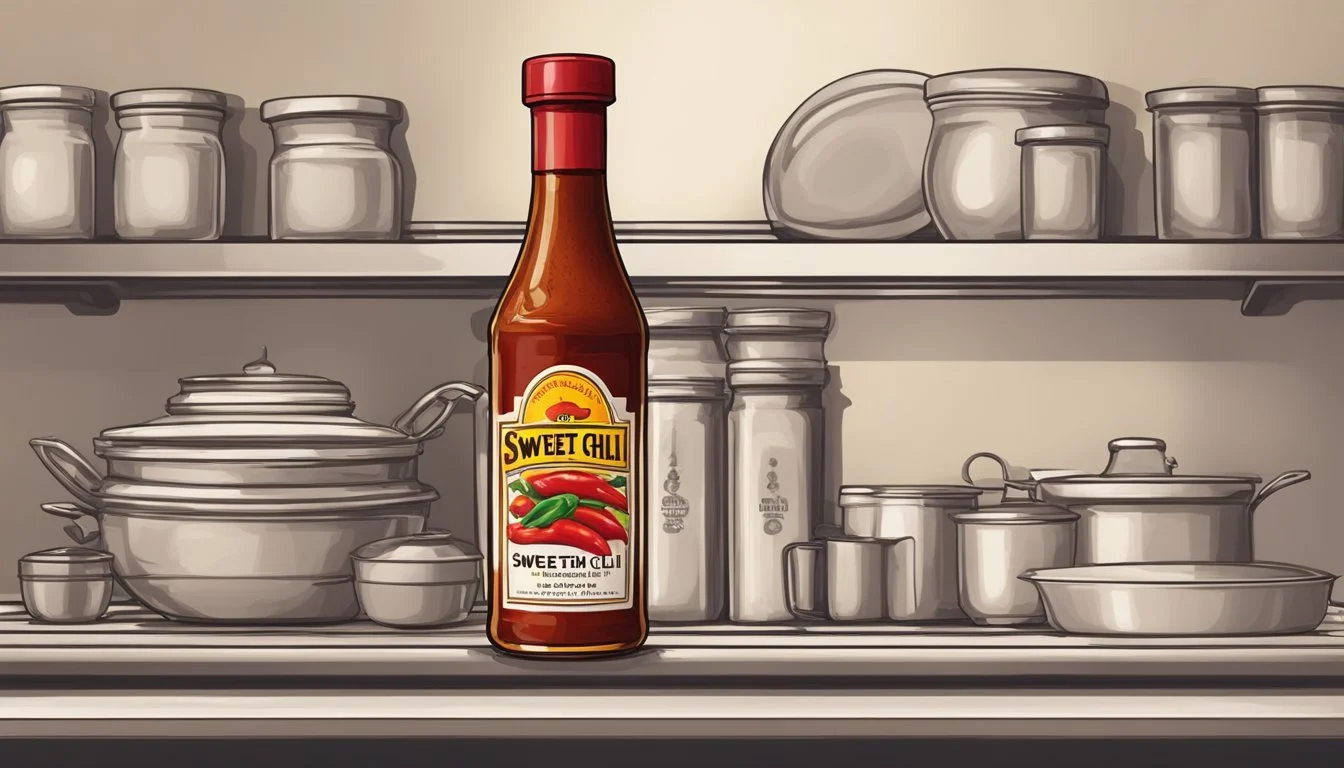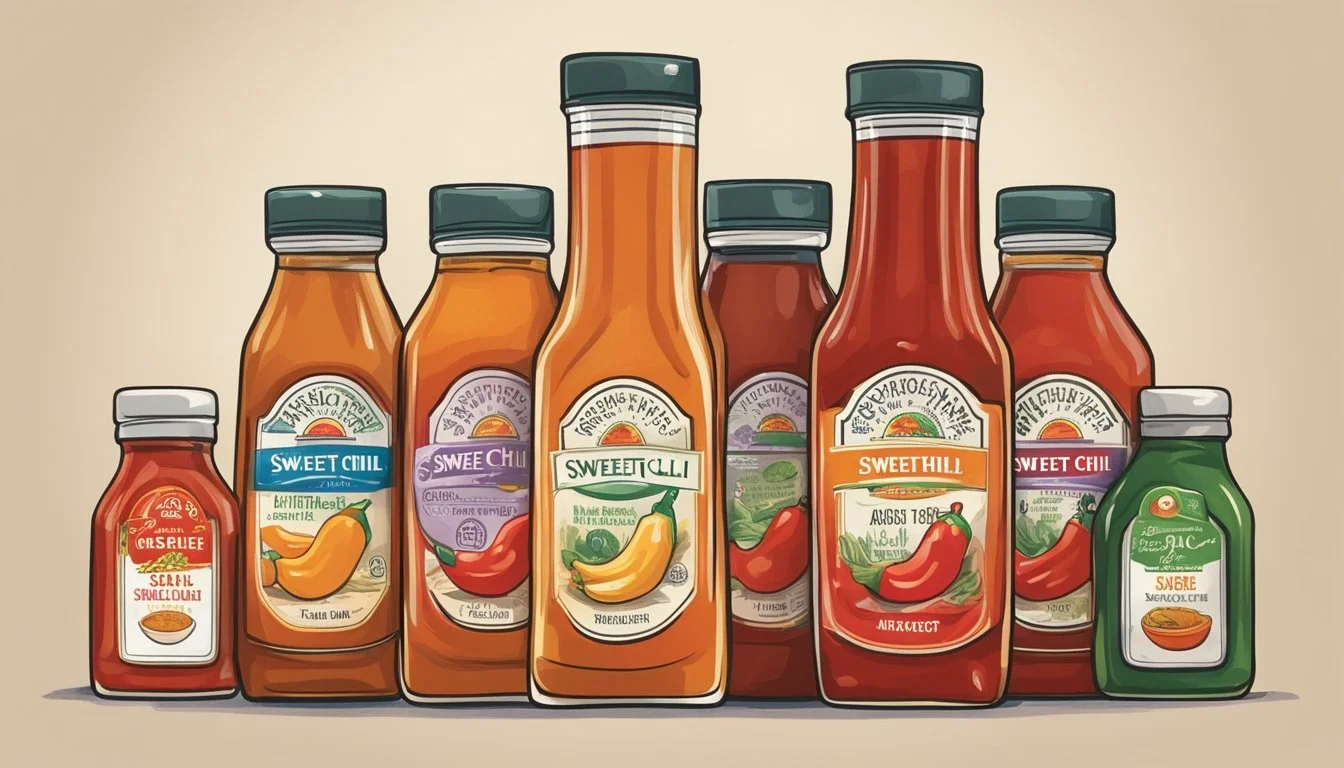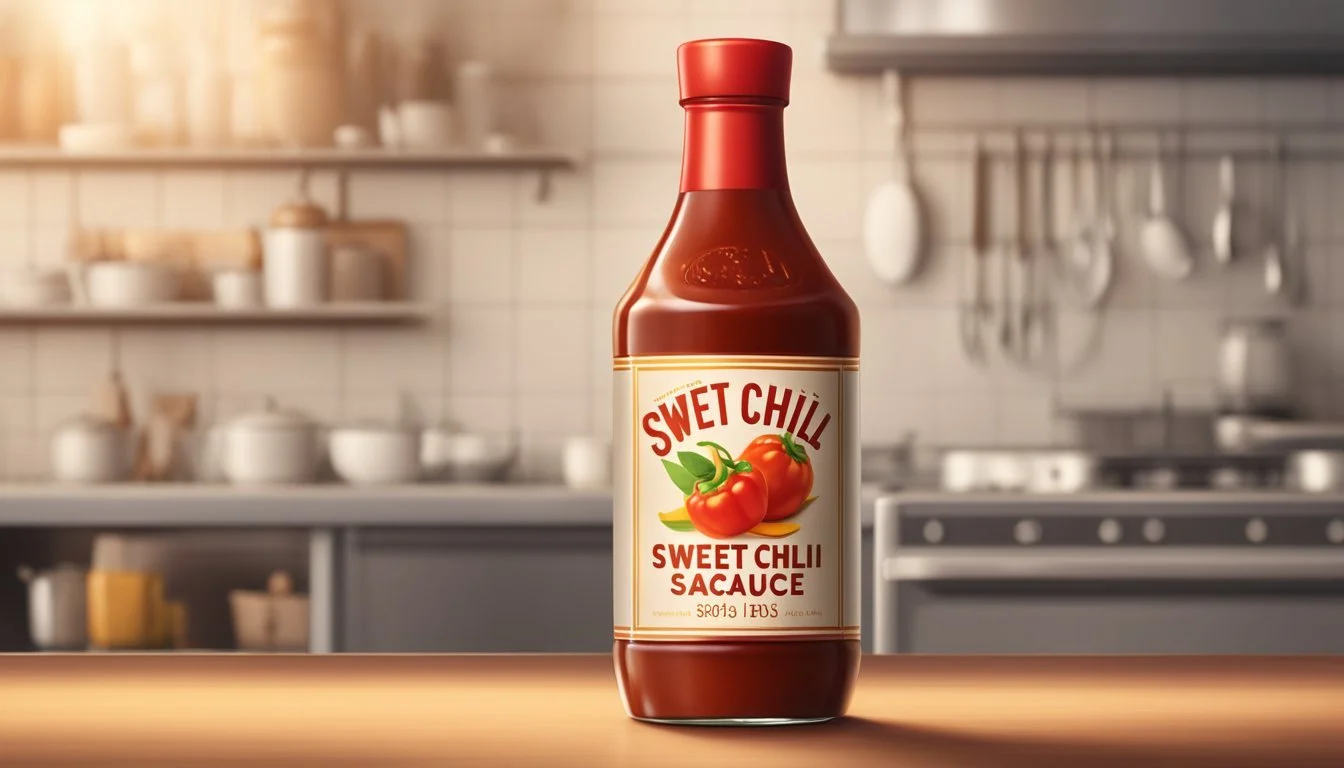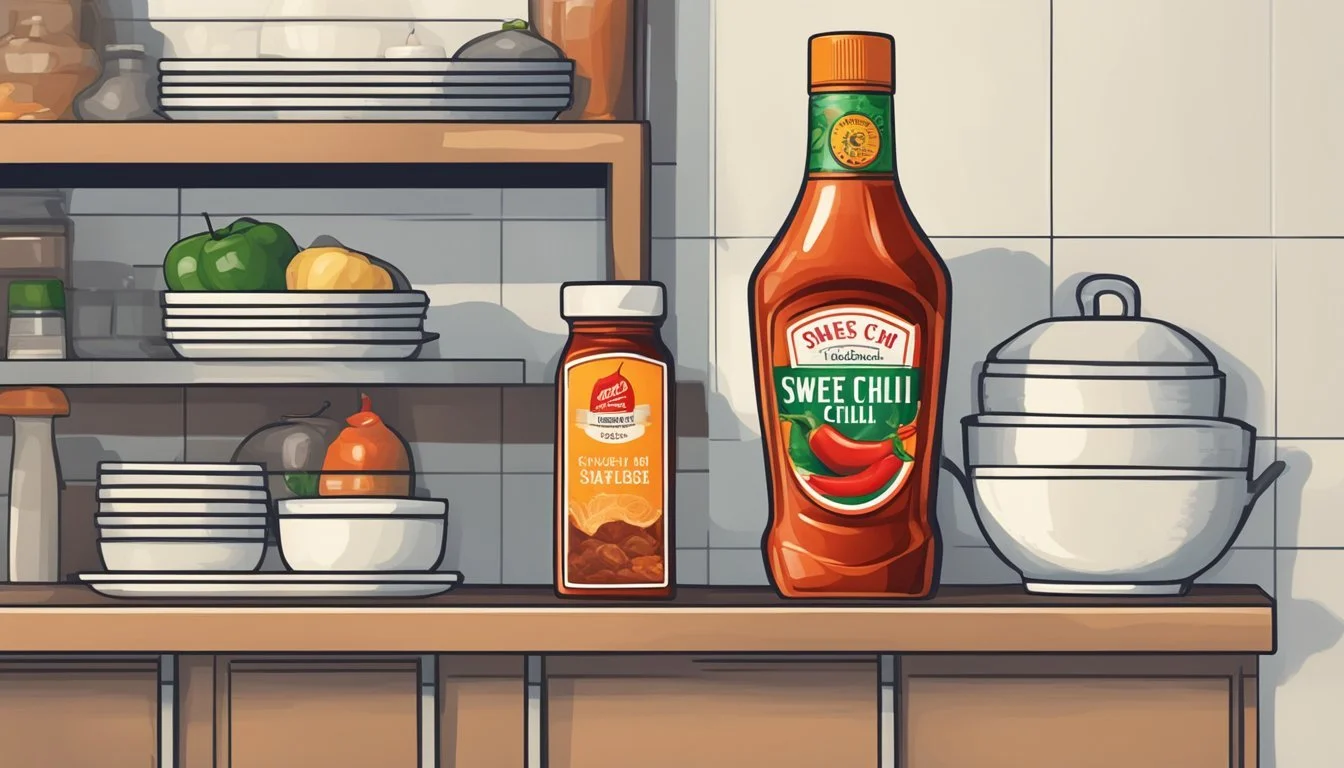How Long Does Sweet Chili Sauce Last?
Shelf Life and Storage Tips
Sweet chili sauce (how long does sweet chili sauce last?) is a versatile condiment cherished for its harmonious blend of sweetness and heat, making it a popular addition to a variety of dishes. Commonly used as a dipping sauce, glaze, or marinade, the proper storage of sweet chili sauce is integral to maintaining its quality and safety for consumption. Its shelf life can be significantly affected by storage conditions, making it important for consumers to understand how to best preserve this flavor-enhancing ingredient.
Under optimal storage conditions, an unopened bottle of sweet chili sauce can remain stable and safe to use for a lengthy period. Once the bottle is opened, the preservation of its taste and quality becomes dependent on how it is stored. Refrigeration is generally recommended for retaining the sauce's best quality after opening, as it slows down the degradation process and extends shelf life. The typical duration for which opened sweet chili sauce can be kept in the refrigerator while maintaining its best quality is between six to nine months.
Understanding Sweet Chili Sauce
Sweet Chili Sauce, a staple in Asian cuisine, melds sweetness with heat for a versatile condiment. Its shelf stability varies depending on ingredients and storage methods.
Origins and Varieties
Originally from Thailand, sweet chili sauce is known as nam chim kai and used as a dip for grilled chicken. Today, it enjoys worldwide popularity with variations across different cuisines. While the Thai version remains the most prominent, some Asian cultures have introduced their own take, incorporating local flavors and adjusting the spice level to preference.
Key Ingredients
The fundamental components of sweet chili sauce include chili peppers, sugar, garlic, and vinegar. Some variations might also contain soy sauce or tamari (how long does tamari last?), enhancing the umami element. The balance of these ingredients delivers a harmonious blend of sweet, spicy, and tangy flavors that define the sauce's character.
Chili Peppers: provide the heat
Sugar: offsets the spice with sweetness
Garlic: adds depth of flavor
Vinegar: introduces acidity for balance
Commercial vs. Homemade
Commercial sweet chili sauces are widely available and often contain preservatives to extend shelf life, which can typically range up to two years unopened. Upon opening, they should be used within 6 months and refrigeration is recommended to maintain optimal quality.
Homemade sweet chili sauce, free from additives, tends to have a shorter shelf life. It should be stored in a cool, dark place and can last up to two years when unopened. Once opened and refrigerated, it is best used within one month to ensure freshness. Homemade varieties allow for customization of flavor and spice levels and can provide a fresher taste profile compared to their commercial counterparts.
Proper Storage Methods
To maximize the shelf life of sweet chili sauce and preserve its flavor, storage conditions must be carefully considered. The appropriate choice between refrigeration and pantry storage, the use of airtight containers, and understanding freezing techniques are pivotal.
Refrigeration vs. Pantry
Sweet chili sauce should be stored in the fridge after opening to maintain its freshness and prevent spoilage. Unopened bottles can be kept in the pantry if they are commercially produced and contain preservatives. However, homemade sweet chili sauce, or any type without adequate vinegar content, must be refrigerated to ensure safety and quality.
Location Conditions Shelf Life Pantry Cool, dry, away from direct sunlight Until Opened Refrigerator Below 40°F (4°C) Up to 6 months
Airtight Containers
To store sweet chili sauce properly, it should be kept in an airtight container. If not in its original sealed container, transfer the sauce to a container with a tight-fitting lid to prevent contamination and oxidation, which can affect taste and safety.
Sealed Container: Preserves sauce quality by preventing exposure to air.
Tight-Fitting Lid: Mitigates the risk of absorbing refrigerator odors.
Freezing Techniques
While not typical, sweet chili sauce can be frozen to extend its shelf life. To freeze, one should pour the sauce into a sealed container or freezer bag, leaving some space for expansion. This method is useful for long-term storage but could affect the consistency and flavor of the sauce upon thawing.
Sealed Container/Freezer Bag: Essential for preventing freezer burn.
Space for Expansion: Prevents container breakage as sauce expands when frozen.
Implementing these storage methods will help in keeping sweet chili sauce at its best for an extended period.
Sweet Chili Sauce Shelf Life
When considering the shelf life of sweet chili sauce, it is essential to differentiate between unopened bottles and an opened container. Proper storage conditions are key to maintaining best quality, flavor, and preventing spoilage.
Unopened Bottles
Shelf Life: Typically, an unopened bottle of sweet chili sauce can maintain its best quality for 12 to 18 months when stored in a cool, dark place. After this period, while it may still be safe to consume, the quality could begin to degrade.
Storage Conditions: To ensure maximum shelf life, store unopened bottles away from direct sunlight and heat sources.
After Opening
Shelf Life: Once opened, sweet chili sauce should generally be used within 6 months for optimal taste and quality. Refrigeration can extend this period and is highly recommended.
Storage Conditions:
Refrigeration: Keeping an opened container in the fridge is crucial to extend shelf life.
Airtight Container: Transfer to an airtight container if not in its original bottle.
Signs of Spoilage
Appearance, Odor, and Texture: Food safety is paramount, so it's important to look for signs of spoilage including:
Mold: Any visible growth indicates spoilage.
Odor: An off odor is a clear sign that the sauce should not be consumed.
Discoloration or Texture Changes: Any alterations in color or texture can be indicators of spoilage.
It's important to adhere to the expiration date on the label to avoid the risks of consuming spoiled condiments. If in doubt, dispose of the sauce to ensure safety.
Utilizing Sweet Chili Sauce
Sweet chili sauce is a versatile condiment that can elevate various dishes with its sweet and spicy flavor profile. It serves multiple roles in the kitchen, from a simple dip to a complex flavor enhancer in cooking.
Dipping and Condiments
Sweet chili sauce is widely favored as a dipping sauce, particularly in Asian cuisine. It pairs exceptionally well with appetizers such as spring rolls, chicken tenders, and dumplings. Often, it is used as an Asian dip alternative to cocktail sauce or ketchup, delivering a unique balance of heat and sweetness.
Nam chim kai (Thai sweet chili sauce) typically accompanies fried chicken.
It can be mixed with mayonnaise to create a creamy dip for fries or seafood.
Cooking Applications
In cooking, sweet chili sauce shines as a glaze for proteins like chicken, pork, and shrimp. Its syrupy consistency caramelizes well under heat, creating a flavorful crust.
Used as a stir-fry sauce, it adds a tangy kick to vegetables and noodles.
As a marinade, it imparts sweet heat to meats before grilling or baking.
Table: Sweet Chili Sauce Cooking Applications
Application Suggestion Glaze Brush on meats before grilling for a caramelized finish. Stir-fry Add towards the end of cooking to coat ingredients. Marinade Combine with other ingredients and soak meats for several hours.
Creative Uses and Substitutes
Sweet chili sauce's adaptability can inspire innovative culinary creations or act as a substitute in a pinch.
With a few modifications, it can replace sweet and sour sauce in a recipe, providing a similar yet distinct flavor profile.
It can serve as a sweet chili sauce substitute in dishes calling for enchilada sauce or when thickening is needed.
List of Substitutions
Enchilada Sauce: Mix with a bit of tomato sauce for a twist on enchiladas.
Sweet and Sour Sauce: Use it directly or adjust the sweetness using pineapple juice or sugar.
Through its use as a dip, cooking ingredient, and creative substitute, sweet chili sauce remains an indispensable asset in culinary circles.
Health Considerations
When considering the health impact of sweet chili sauce, consumers should examine its preservative content, sugar and calorie makeup, and potential allergens. These factors can affect the sauce's safety and nutritional value.
Preservatives and Additives
Preservatives in sweet chili sauce, such as sodium benzoate or potassium sorbate, help prevent the growth of bacteria and yeast, extending the shelf life. Consumers should be aware that while these substances are deemed safe, they do so within certain usage limits set by health authorities. Artificial additives may also feature in the ingredient list to enhance flavor or appearance, and it's prudent to check for any ingredients that may raise health concerns.
Sugar and Calorie Content
Sweet chili sauce has a high sugar content, contributing to its calorie count. This can impact diets, particularly for individuals managing their calorie intake or blood sugar levels. Labels should be checked to understand the total sugars and calories per serving. Unlike ingredients such as capsaicin and vitamin C that come from the chili peppers and can provide health benefits, excessive sugar intake lacks nutritional benefits and should be moderated.
Allergens and Dietary Restrictions
It's essential to examine sweet chili sauce labels for potential allergens, such as gluten, which can be present from additives like modified starch. Those with dietary restrictions can look for gluten-free certifications. Additionally, cross-contamination during manufacturing could introduce allergens, so those with severe allergies should ensure the sauce is produced in an allergen-free environment. Products may also contain ingredients derived from common allergens such as nuts, dairy, or soy.
Safety and Food Poisoning
When it comes to sweet chili sauce, ensuring safety and mitigating the risk of food poisoning are paramount. Recognizing the signs of spoilage, preventing contamination, and handling leftovers safely are key to maintaining the sauce’s freshness and edibility for several months.
Identifying Spoiled Sauce
Spoiled sweet chili sauce can pose a significant risk of food poisoning. Signs of spoilage include:
An unpleasant odor
Changes in texture, such as becoming excessively watery
A visible presence of mold or any changes in color
If any of these indicators are present, the sauce should be discarded immediately to avoid the consumption of spoiled or contaminated product.
Preventing Contamination
To prevent sweet chili sauce from spoiling and contaminating:
Always use clean utensils when serving the sauce to prevent the introduction of bacteria.
Store the sauce in an airtight container, whether kept in the refrigerator or freezer, to safeguard against contaminants.
Ensure the sauce is stored at a consistent temperature and avoid leaving it at room temperature for extended periods.
Handling Leftovers Safely
Leftover sweet chili sauce requires careful handling to extend its shelf life and maintain its safety:
Refrigerate leftovers within two hours of serving to prevent the growth of bacteria.
Keep the sauce in the refrigerator for no more than a week; for longer preservation, freeze for up to two to three months.
Thoroughly check for spoilage signs before consumption, especially if the sauce has been stored for several months.
By following these guidelines, one can minimize the risks of food poisoning and spoilage, ensuring that the sweet chili sauce retains its intended flavor and quality.
Extending the Life of Sweet Chili Sauce
Proper storage and handling can significantly extend the life of sweet chili sauce, ensuring it remains safe and flavorful for consumption. Below are specific techniques and factors that contribute to the longevity of this condiment.
Proper Sealing Techniques
To extend the life of sweet chili sauce, it is crucial to seal the sauce airtight after each use. This prevents the introduction of contaminants and reduces exposure to air, which can lead to spoilage. Use a clean spoon for serving to avoid introducing bacteria, and seal the container tightly. For homemade sauces, transferring to a sterilized jar with a screw-top lid can keep the product fresh longer.
Effect of pH on Preservation
The acidity (pH) of sweet chili sauce plays a significant role in its preservation. Most commercial sweet chili sauces have a pH that discourages the growth of microbes. The natural acidity from ingredients like vinegar can help in preserving the sauce. Maintaining the original pH of the sauce is essential, so do not dilute it or add ingredients that may alter its acidity.
Impact of Cold Storage
Refrigerating sweet chili sauce is highly recommended, as cold temperatures slow down the fermentation process and reduce the chance of spoilage. Once opened, sweet chili sauce should be kept in a refrigerator, where it can last for around 6 to 9 months. While freezing is an option, it can affect the consistency and flavor of the sauce upon thawing, so refrigeration is preferable for maintaining quality.
Refrigerate: Immediately after opening or preparing.
Duration: Best used within 6-9 months when refrigerated.
Best By: Observe the 'best by' date for unopened bottles, but use refrigeration to maximize freshness post-opening.








